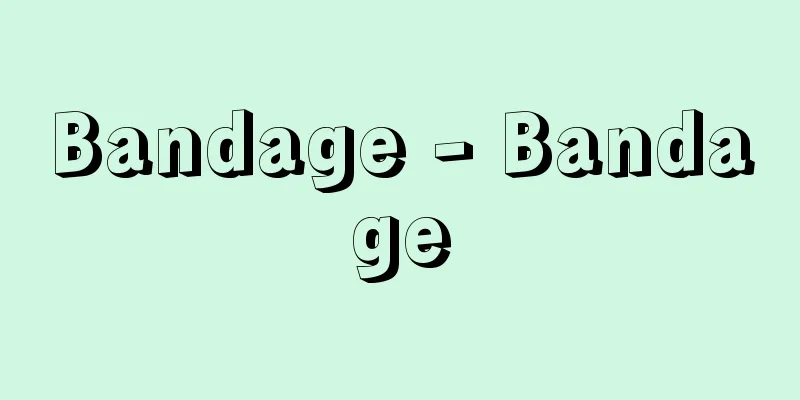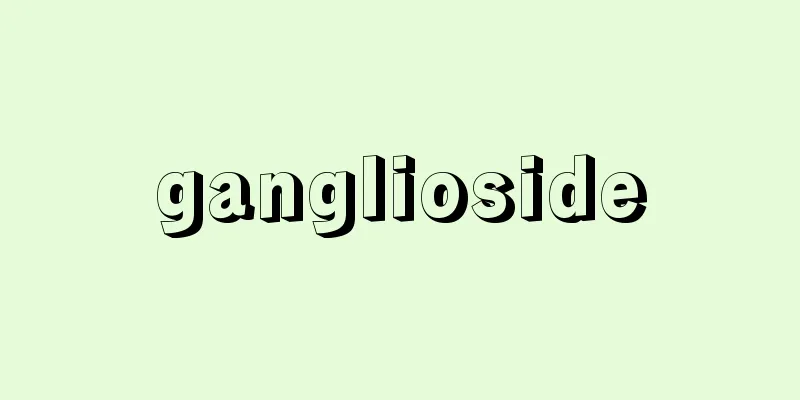Bandage - Bandage

|
A type of plaster, the Japanese Pharmacopoeia defines it as a material made by kneading selected rubber, resins, zinc oxide and other substances into an adhesive, which is then evenly spread on cloth. This is called zinc oxide rubber bandage, and various improved products have been made to meet the diversification of demand. There are paper bandages and cellophane tape that are easy to tear by hand, elastic bandages made from nonwoven fabric, polyurethane elastic cloth and tightly twisted cotton thread, first aid bandages and Mercuro bandages with disinfected gauze, etc., each of which can be cut to the appropriate length and width and used for fixing, compression, support, traction, covering, etc. For example, they are used to fasten surgical gauze, temporarily fix sprains, fractures, and dislocations, fasten compression pads for umbilical hernias, and to tightly fasten wounds (skin suture bandages), as well as for bandage traction (internal traction method) and to fasten and support catheters and butterfly needles for intravenous drips and injections. These are all included in the category of bandages. When using, it will adhere better if you wipe away local fat with benzine cotton and shave any hairy areas before use. If using over a long period of time, test first to select the right type, otherwise rashes and blisters may occur. Bandages do not allow air to circulate well, and can block sweat glands and cause rashes, so they should never be used directly on wounds. Improved products with better breathability have become popular in recent years. Also, when peeling it off, soak it in cotton wool with benzine and peel it off without pulling the skin, and after peeling it off, wipe it clean with benzine cotton. [Funji Koyasu/Nobuko Yamane] [References] | |Source: Shogakukan Encyclopedia Nipponica About Encyclopedia Nipponica Information | Legend |
|
硬膏剤の一種で、日本薬局方によると、精選したゴム、樹脂類、酸化亜鉛およびその他の物質を練り合わせ、粘着物質とし、布に均等に延べて製したもの、と規定されている。これは亜鉛華ゴム絆創膏とよばれたもので、需要の多様化に伴い改良品がいろいろつくられている。すなわち、手切れ性をよくした紙絆創膏やセロファンテープ、不織布・ポリウレタン弾性布・強撚綿糸(きょうねんめんし)を用いた伸縮性絆創膏、消毒ガーゼ付きの救急絆創膏やマーキュロ絆創膏などがあり、それぞれ適当な長さや幅に切って固定、圧迫、支持、牽引(けんいん)、被覆などに用いる。たとえば、外科用ガーゼ類の固定をはじめ、捻挫(ねんざ)・骨折・脱臼(だっきゅう)の一時固定、臍(さい)ヘルニアの圧迫パッドの固定、創口(きずぐち)の密着固定(皮膚縫合絆創膏)のほか、絆創膏牽引(介達(かいたつ)牽引法)や点滴・静脈注射などのカテーテル・翼状針の固定・支持などがある。これらは絆創膏包帯に含まれる。 使用の際には、局所の脂肪をベンジン綿で拭(ふ)き取り、有毛部は剃毛(ていもう)してから用いると、よく付着する。長期間使用する場合は、テストをして種類を選ばないと、かぶれや水疱(すいほう)を生じることがある。絆創膏包帯では空気の流通が悪く、汗腺(かんせん)をふさいでかぶれをおこしやすいので、創面などへの直接使用は厳禁である。近年は、通気性をもたせた改良品も普及している。 また、剥(は)がすときはベンジン綿で浸しながら皮膚を引っ張らないように剥ぎ、剥いだあともベンジン綿できれいに拭き取っておく。 [幸保文治・山根信子] [参照項目] | |出典 小学館 日本大百科全書(ニッポニカ)日本大百科全書(ニッポニカ)について 情報 | 凡例 |
<<: Carrier multiplex communication
>>: Accompaniment - Bansou (English spelling)
Recommend
Tenmazuka - Heavenly Horse Tomb
A wooden coffin tomb from Silla during the Three ...
Eidai
…After the Xinhai Revolution, the Presidential Of...
Haliaeetus vocifer (English spelling)
... Sea eagles are made up of eight species in th...
The Structure of Scientific Revolutions
... A scientific revolution in the above sense is...
Underground stem - Chikakei
A general term for stems that lie below ground le...
The May 30th Uprising in Jiandao
Caught between Japanese aggression and the Chinese...
Orgy (English spelling)
The word originates from orgia, which meant a ritu...
Striae - Myakuri
Also called "streaks." A type of defect ...
Kagashi - Kagashi
…However, wild boars have a wide range of movemen...
Acute toxicity - Acute toxicity
Acute toxicity refers to the toxic effects that o...
Escoffier, GA (English spelling)
...Marie-Antoine Carême (1784-1833), who was acti...
Akimoto Minosuke
…Originally it means apple wine (cider), but in J...
Aden Abdullah Osman
...When the country gained independence in 1960, ...
Gallia Belgica (English spelling) GalliaBelgica
… 【history】 [Ancient and Middle Ages] Until it ga...
Chondrostei
…A subclass of bony fish, the Actinopterygii. The...









